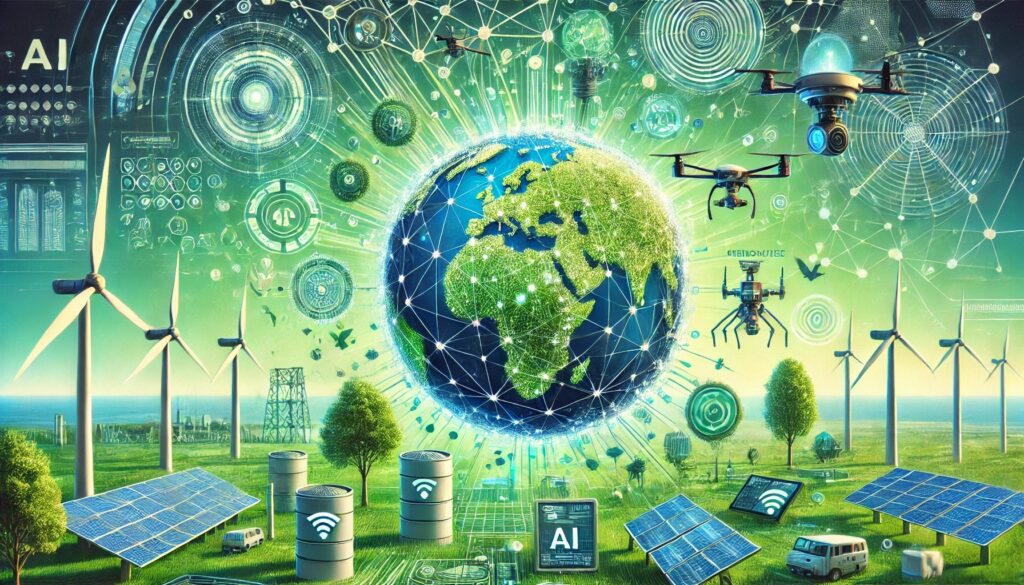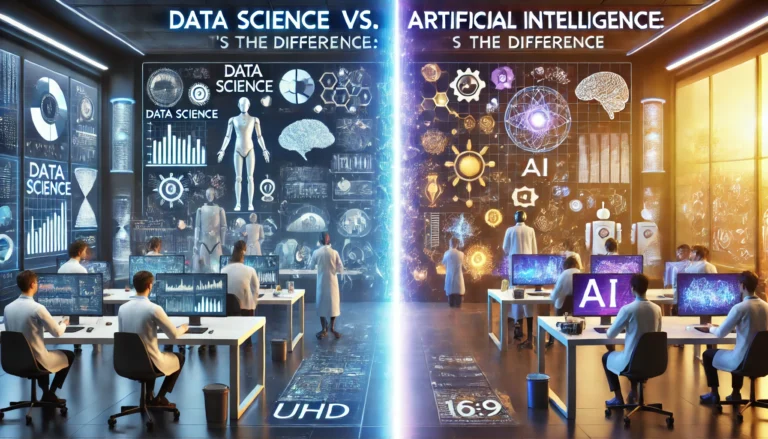
Climate change poses one of the most significant challenges of our time, threatening ecosystems, economies, and communities worldwide. The urgent need to mitigate its effects has driven researchers, governments, and industries to explore innovative solutions. Among these, Artificial Intelligence (AI) has emerged as a powerful tool in the fight against climate change. By leveraging vast amounts of data and advanced algorithms, AI can revolutionize how we monitor, predict, and respond to environmental changes.
This article delves into the multifaceted role of AI in combating climate change, exploring its applications, benefits, challenges, and future prospects. From enhancing renewable energy systems to optimizing resource management, AI offers transformative potential to address this global crisis.
Understanding Climate Change
What is Climate Change?
Climate change refers to long-term alterations in temperature, precipitation, wind patterns, and other elements of the Earth’s climate system. While natural factors like volcanic eruptions and solar variations contribute to climate variability, human activities, particularly the burning of fossil fuels, deforestation, and industrial emissions, have accelerated these changes, leading to global warming.
Impacts of Climate Change
- Rising Temperatures: Increased greenhouse gas emissions have led to higher global temperatures, causing heatwaves, melting glaciers, and rising sea levels.
- Extreme Weather Events: Climate change has intensified hurricanes, floods, droughts, and wildfires, causing widespread destruction.
- Biodiversity Loss: Altered ecosystems and habitats threaten countless species, leading to biodiversity decline.
- Economic Disruptions: Agriculture, fisheries, and other industries face severe challenges, affecting livelihoods and global economies.
The Urgency for Action
The Intergovernmental Panel on Climate Change (IPCC) emphasizes the need for immediate and concerted efforts to limit global temperature rise to 1.5°C above pre-industrial levels. This requires reducing greenhouse gas emissions, adopting sustainable practices, and leveraging advanced technologies like AI.
The Intersection of AI and Climate Change
AI encompasses a range of technologies, including machine learning, natural language processing, computer vision, and robotics. Its ability to process vast datasets, identify patterns, and make predictions makes it a valuable asset in addressing climate-related challenges.
Key Applications of AI in Climate Action
- Climate Modeling and Prediction:
- AI enhances climate models by integrating diverse datasets, improving accuracy in predicting future climate scenarios.
- Machine learning algorithms analyze historical weather data to forecast extreme weather events, aiding in disaster preparedness.
- Renewable Energy Optimization:
- AI optimizes energy production and distribution in solar and wind farms by predicting weather patterns and adjusting operations.
- Smart grids powered by AI manage energy demand, reducing waste and enhancing efficiency.
- Deforestation Monitoring:
- Satellite imagery combined with AI detects illegal logging activities and monitors deforestation in real-time.
- AI-powered drones survey forests, providing detailed insights into forest health and coverage.
- Carbon Emission Tracking:
- AI tools monitor industrial emissions, identifying key areas for improvement.
- Predictive analytics suggest strategies for reducing carbon footprints across industries.
- Resource Management:
- AI aids in water resource management by predicting droughts and optimizing irrigation systems.
- It enhances waste management systems by improving recycling processes and reducing landfill contributions.
- Urban Planning and Smart Cities:
- AI-driven urban planning reduces energy consumption through optimized building designs and transportation systems.
- Smart cities leverage AI to manage traffic, reduce emissions, and promote sustainable practices.
Case Studies: AI in Action
Google’s AI for Renewable Energy
Google has employed AI to optimize the energy efficiency of its data centers, achieving up to a 40% reduction in cooling energy usage. The company also utilizes machine learning to forecast the output of wind farms, enabling better integration into power grids.
Microsoft’s AI for Earth Program
Microsoft’s AI for Earth initiative supports projects that tackle climate change through AI. Examples include monitoring deforestation in the Amazon and using computer vision to track animal populations for conservation efforts.
IBM’s Green Horizon Project
IBM’s Green Horizon project uses AI to predict air pollution levels and develop strategies for reducing emissions in urban areas. This initiative has been successfully implemented in several Chinese cities.
Challenges and Ethical Considerations
While AI offers immense potential, its implementation in climate action faces several challenges:
Data Availability and Quality
AI relies on large datasets, but incomplete or inaccurate data can hinder its effectiveness. Ensuring reliable and accessible data is crucial.
Energy Consumption of AI Systems
Training AI models requires significant computational power, which can contribute to carbon emissions. Developing energy-efficient AI technologies is essential.
Ethical Concerns
- Bias in Algorithms: AI systems must be transparent and free from biases that could lead to inequitable outcomes.
- Privacy Issues: Data collection for AI applications must respect individual and community privacy.
Collaboration and Integration
Effective climate action requires collaboration among governments, industries, and researchers. Integrating AI solutions into existing systems can be complex and resource-intensive.
Future Prospects
The future of AI in combating climate change is promising, with ongoing advancements in technology and increasing global awareness. Key trends include:
- Enhanced Climate Models: AI will continue to refine climate models, providing more precise predictions and actionable insights.
- AI-Driven Policy Making: Governments can leverage AI to analyze environmental data and develop evidence-based policies.
- Public Engagement: AI-powered tools can educate and engage the public, fostering collective action against climate change.
- Innovative Solutions: Emerging AI technologies, such as quantum computing, hold potential for groundbreaking advancements in climate science.
Conclusion
AI stands as a beacon of hope in the fight against climate change, offering innovative solutions to mitigate its impacts and transition toward a sustainable future. By harnessing the power of AI, humanity can better understand and address the complexities of climate change, paving the way for a resilient and thriving planet.
Collaboration, ethical practices, and sustained investment in AI research will be essential to unlock its full potential. Together, we can leverage AI to safeguard our environment and ensure a sustainable legacy for future generations.




